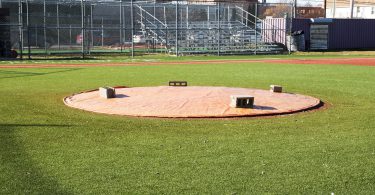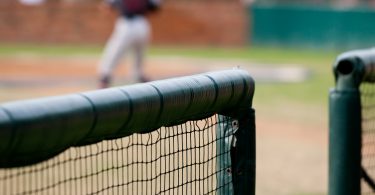Over the years, we have profiled players having outbreaks seasons at the plate. The first year we published this piece, we chronicled Eric Thames’ torrid April to start the 2017 MLB season. To refresh your memory, he played 24 games and carried a .345 AVG, 28 R, 11HR, 19RBI, 1.276 OPS. In the article, which you can read here, we noted that Thames’ plate discipline and pitch selection were a major factor in his turnaround and improvement from years past.
Improved Plate Discipline, Improved Success: MLB Examples
Andrelton Simmons
Like Thames, several years ago Andrelton Simmons got off to a scorching start. Through 33 games, he is hit .350 with a .407 On-Base percentage and a .902 OPS. Not bad for a player long recognized for his defensive prowess. To put Simmons’ offensive production in perspective, his wRC+ of 156, means he is performing 56% better than league average offensively. So what might have accounted for Simmons getting off to the best start of his career? You guessed it, improved plate discipline.
At the time of writing that year’s article, Simmons had cut his chase rate (swinging at pitches outside the zone) down by 7% from last season. His chase rate of 21% was good for 15th best in the MLB at the time, and a solid 8% better than the league average chase rate of 29%. In short, Simmons was doing a better job of forcing pitchers to throw in the strike zone to get him out, and making them pay for doing it.
Hunter Dozier
Hunter Dozier was the next absolutely textbook example we profiled. At this stage in 2019, he was better across the board, batting .318 (.229 last year) with an OPS (on base plus slugging) of 1.034 (.673 last year) and posting a whopping wRC+ of 172 (80 the year before!), meaning he is performing 72% better than league average offensively. That’s huge! And what about his plate discipline? He’s cut his chase rate out of the zone (35.6%-2018 to 25.4%-2019), his swinging strike rate (13%-2018 to 7.8%-2019) and his overall swing rate (50.1%-2018 to 30.8%-2019) and his overall contact rates inside the zone and overall had increased. What does this all mean? He’s swinging less and hitting the ball more with even better contact. The turnaround at this stage of the season was beyond impressive and it was due at least in part to his improved discipline.
While Dozier didn’t carry these monster numbers all season, he did improve significantly, and it’s a glimpse at what can happen with improved plate discipline.
Acuña and Seager
After Covid-related gap in this article, we came back to profile Ronald Acuña. This year, through his first 11 games of an injury shortened season, Corey Seager has improved his chase rate out of the zone by 15% while improving his swing decisions inside the zone and the difference has been night-and-day from his disappointing season last year. So, what do all these numbers mean for you?
All these breakthrough players are showing hitters at every level of baseball from Little League on up how they can get better, regardless of their physical size or tools. Plate discipline is a key sign of improvement, and if you want to improve as an offensive player, it’s a great place for you to start, today!
What is Improved Plate Discipline?
Improved plate discipline means you are swinging at good pitches to hit, which translates to hitting the ball harder more consistently. Being patient enough to wait for a pitch you can handle forces pitchers to throw in the strike zone and beat you with their stuff. It also allows a hitter to see more pitches, get on base more consistently, and strike out less. Plate discipline is a sign of maturity and understanding in the box, a trait that college coaches love.
Plate discipline goes beyond swinging at strikes and taking balls. It also doesn’t mean that you are passive at the plate. You should still take a “Yes, yes, yes, YES!” or “Yes, yes, yes, NO!” approach to hitting. Plate discipline has to do with swinging at pitches you are looking for and that you can hit hard at a high rate. It’s a skill that helps distinguish between a batter and a hitter. A batter has an approach and a plan that changes from pitch-to-pitch and situation-to-situation. Batters understand that there are ways to help generate offense beyond trying to get a hit on every pitch. A lineup of batters is much more consistent than a lineup of hitters. Hitters are streaky—on a constant roller-coaster. When you rely on getting a hit every AB, you are likely to expand the zone, start pressing when the results aren’t coming, and be at the mercy of the pitcher. When a player swings at pitches he can hit hard on a regular basis and lays off pitches that hitters get themselves out on, he no longer relies on pitchers to make mistakes to be successful.
How to Improve Your Plate Discipline
So how can you improve your plate discipline and turn yourself into a batter that is a true offensive weapon? Start by understanding which pitches you hit well and which you don’t. Practice working in certain hitting zones during BP and drill work. For example, take inside strikes and swing at strikes on the outer half. Then switch. Or do the same on pitches up and down. Always provide context and situation for your swings.
Next, watch the game closely. Pitchers have tendencies and patterns. If you watch every hitter during the game intently, you will gain a lot of information and be able to make much more educated/accurate guesses on what pitch is coming in a given count or situation. This will allow you to sit on a pitch or a speed during leverage counts. Another thing to do is train your eyes like you do your swing! Find ways to get as many visual reps as possible. Stand in on bullpens. Look into vision strengthening games and exercises. Finally, become a student of the game. The more you learn about approach and plate discipline, and the better you understand which pitches you hit well, the tougher out you will become. Not only will these skills turn you into the batter that college coaches want, your team’s offense will benefit immensely as well.
You don’t need to have Corey Seager or Ronald Acuña’s physical tools to improve your offensive value, but you would be smart to copy their blueprint for increasing success. Focus on plate discipline and watch your offensive production improve.
Want to listen to this article in audio format? Simply click the play button below!







